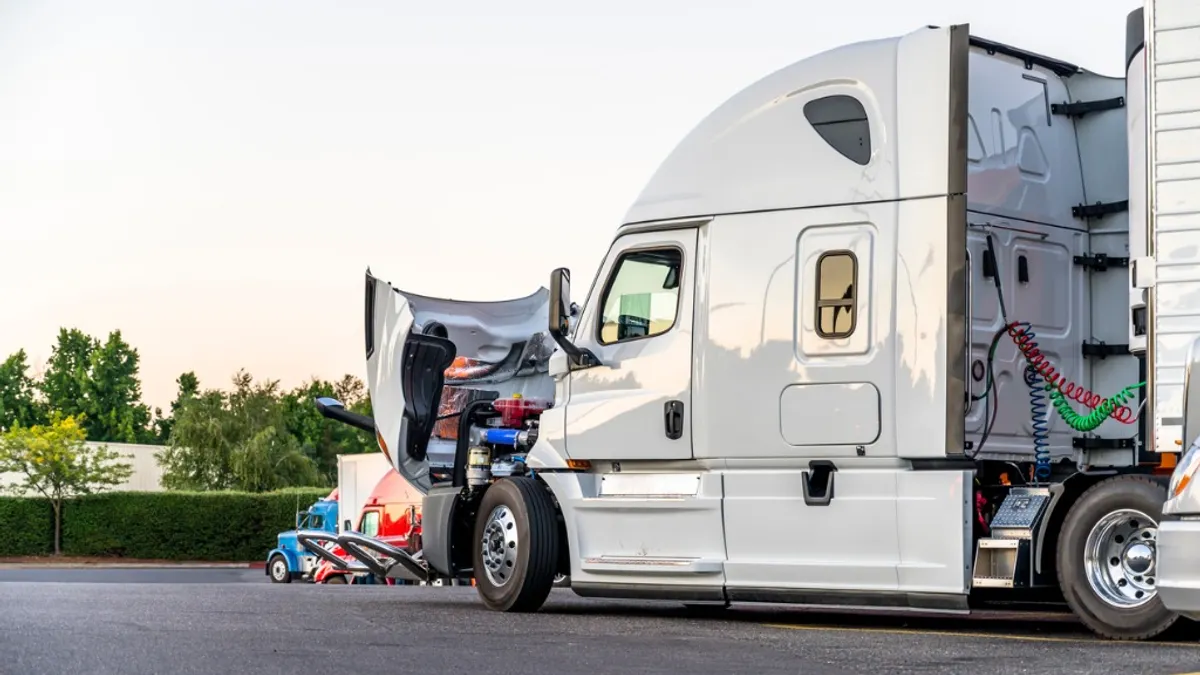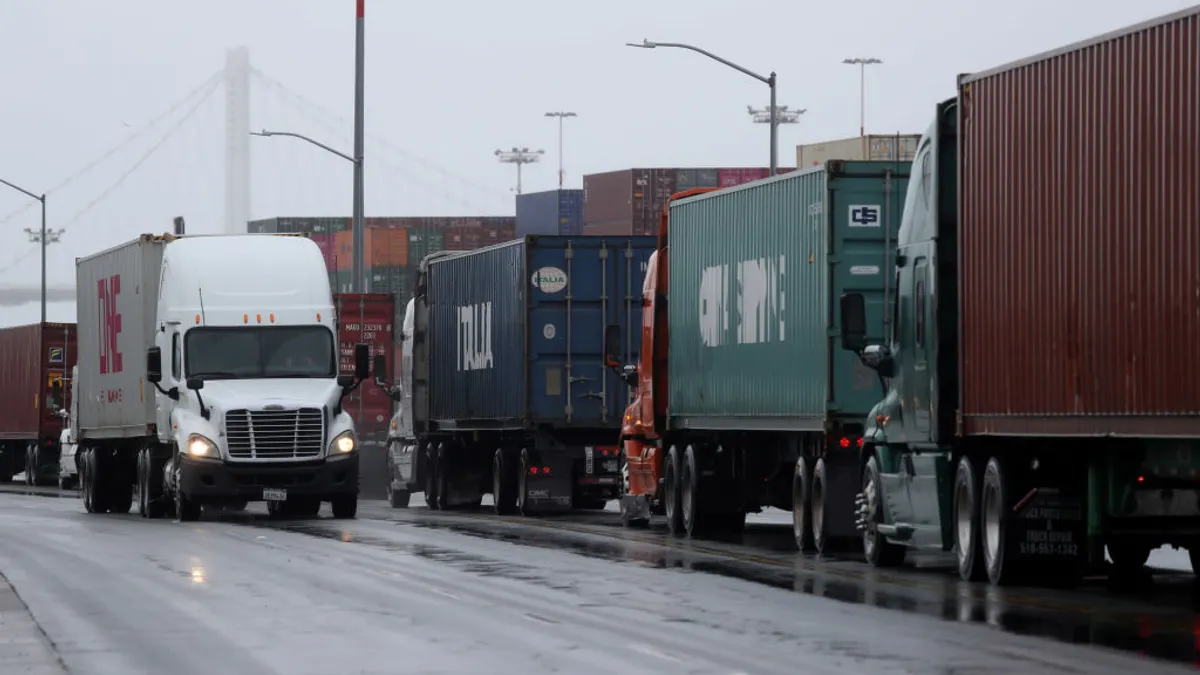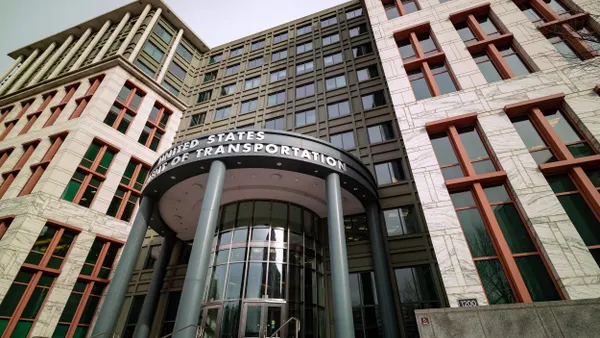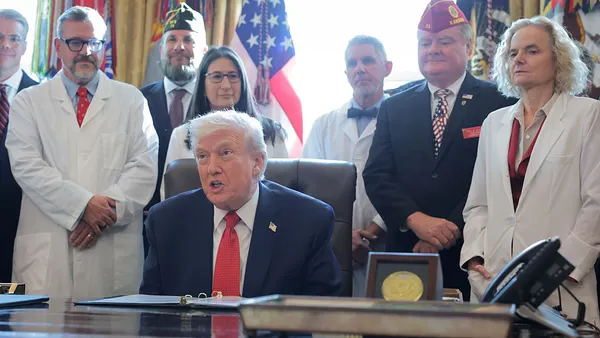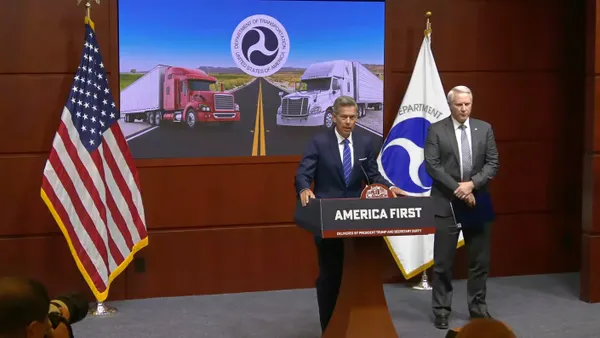The Trump administration is seeking to protect U.S. truck manufacturing, even though most production is done domestically.
A 25% truck tariff is slated for Oct. 1, although official documentation has yet to be published. But assuming the tariff is implemented, the true impact will center on a series of areas, notably:
- if it involves the complex supply chain of vehicle parts and sourcing
- whether or not it’s stacked on existing tariffs
- whether it overrides any provisions in the free trade U.S.-Mexico-Canada Agreement
President Donald Trump said Thursday on Truth Social that there’s “unfair outside competition” for heavy-truck manufacturers. The White House didn’t immediately respond to a message seeking comment.
“We are closely monitoring the situation, but it’s too early to provide a detailed comment,” a Daimler Truck North America spokesperson said Monday by email.
Truck manufacturers pointed out that 99% of Class 8 trucks from four OEMs, Daimler Truck North America, International, Paccar and Volvo Trucks North America, are manufactured domestically.
When adding in medium-duty manufacturers, including just a handful of other players, the industry assembled 88% of medium-duty and heavy-duty trucks in 2024, Stellantis noted.
Medium-duty OEMs include the Big Four with Ford, GM, Stellantis, Hino and Isuzu, and assembly occurs in the U.S., Mexico, Canada and Japan, Paccar said previously.
Truck manufacturers called for new tariffs not to stack on top of existing ones. An executive order in April said that tariffs applying to the same article should not have a cumulative effect because such stacking would exceed what’s necessary for the policy goal.
In Trump’s truck tariff announcement, he said that tariffs will protect large truck manufacturers such as Peterbilt, Kenworth, Freightliner, Mack Trucks and others “from the onslaught of outside interruptions.” He also said the move was meant to help make truckers financially healthy and for national security purposes.
Nevertheless, tariffs have already meant higher costs for trucks. Paccar, for example, noted that the business has used surcharges to pass along costs to carriers.
Meanwhile, steel and aluminum tariffs are already in effect, and the U.S. is investigating critical minerals and supplies. Truck parts use such materials from abroad including China, Stellantis said in May for a Section 232 investigation on medium- and heavy-duty trucks and parts.
“The current tariff structure is significantly disadvantaging American-made medium- and heavy-duty trucks compared to trucks assembled in Mexico,” Paccar CEO Preston Feight said in the business’ comments on the matter in May.
Last year, U.S. imports of heavy trucks mainly came from Mexico and Canada, representing $15.6 billion and $4.5 billion, respectively, in customs value, Michigan State University supply chain professor Jason Miller noted on a LinkedIn post Monday.
"As such, I’m confident these tariffs will override USMCA, just as finished vehicles from Canada and Mexico are now tariffed regardless of USMCA compliance," Miller said.




